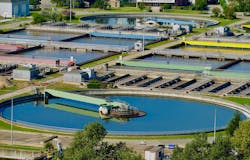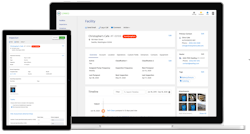Streamlining During the Pandemic - Is it Here to Stay?
As the saying goes – “necessity breeds invention” – the pandemic has forced change on many business practices and the water industry is no exception. Municipalities, businesses, and regulatory agencies have had to find new ways to streamline operations to accommodate social distancing and remote working. Technology has been the common thread that has made much of this possible, and indeed municipalities that were already using technologies for remote monitoring, data management, and operations have fared the best.
Technological innovation is by design inclusive, not exclusive. Take the US Environmental Protection Agency’s Cross-Media Electronic Reporting Rule (CROMERR) that provides the legal framework for electronic reporting under EPA’s regulatory programs. The Rule sets performance-based, technology-neutral system standards and provides a streamlined, uniform process for Agency review and approval of electronic reporting. It is there to ensure that the same legal defensibility applies to electronic reports submitted through a CROMERR compliant system as manually signed documents – and why wouldn’t they? It’s foreseeable and logical that this will continue to be the preferred method for a host of reasons, including traceability, accuracy, and efficiency.
Virtual meetings have become commonplace as a result of the pandemic, and various platforms are being used for virtual inspections now too. Take for example the City of Dallas, TX that uses LinkoCTS to regulate their industrial users (IUs) to make sure they aren't discharging wastewater with harmful contaminants. As many facilities were designated essential during the pandemic, they had to keep producing. This meant that the City was still required to enforce permit requirements including two inspections per year for many of the Industries. To meet this requirement during the pandemic, they have evolved to performing virtual inspections.
“We were faced with the challenge of figuring out how to operate our Industrial Pretreatment Program with almost 50-year-old regulations, in a modern world,” said Joseph Fielding, Manager of Pretreatment Operations for Dallas Water Utilities. “Our staff came up with a plan for virtual inspections. By staff owning the project we were guaranteed the best possible implementation,” said Fielding.
During crises like the one we’re enduring now, the EPA has to focus its resources largely on preventing situations that may create an acute risk or imminent threat to public health. Tasks that do not fall into that category are ripe for automation or improved efficiency by leveraging technology. As a result, several municipalities are now conducting inspections remotely using virtual meetings to ensure permit requirements continue to be met. While in the meeting, Inspectors can pull up data for the inspection from their cloud-based database such as Linko, collaborate on documents using a screen share feature and document outcomes, and any next steps all from the safety of their home.
“Inspections are now faster because we request all paperwork to be provided 48 hours before the inspection. This way, we aren’t searching for paperwork during the inspection and the Inspector just asks questions based on what has already been reviewed. The time to perform an inspection has gone from a day or more to around 1.5 hours to ensure permit requirements are being met,” said Fielding.
There are of course some limitations. “Certain Industries have security policies in place that do not allow a virtual inspection. There is also a requirement from the EPA to keep documentation on-site for at least 3 years, so we ask them to demonstrate that by showing us various documents during the inspection, of course we are counting on them to do their part without being onsite” said Fielding.
“Since we generally conduct two inspections per year for an IU, going forward, I think it would be realistic that we do one inspection virtually and the other in person for Industries that will qualify. This will be a significant reduction in man-hours for the pretreatment team,” concluded Fielding.
In truth, cloud-based software solutions have been providing resiliency to regulatory programs for years, but it has taken the pandemic with shrinking human resources to show its powerful capacity to keep things on track. People can continue to perform the majority of their tasks from anywhere at any time. Their work is accessible by peers, agencies, and management, not only on the day but historically as far back as the software was started, and as far forward as the person has planned out their workload.
Sarah Griffith, Laboratory and Pretreatment Manager at Sanitation District No.1 said, “Since the start of the pandemic, our department has been using Microsoft Teams. This platform provides a collaborative and productive format so we can easily share and discuss our Linko compliance data during a meeting rather than having to set up a computer in the conference room. Inspectors can join meetings from wherever they are, which means fewer meetings are being missed.”
Those that have embraced technology with web-based tools including remote monitoring and/or data collection have been far less affected than those tied to internal networks and paper reporting. Resiliency plans are being tested and those programs driven by innovation and technology are using current circumstances to adapt to a changing world in order to maintain compliance both now and in the future.
About the Author: Rich Prinster is strategic development manager for Aquatic Informatics.

